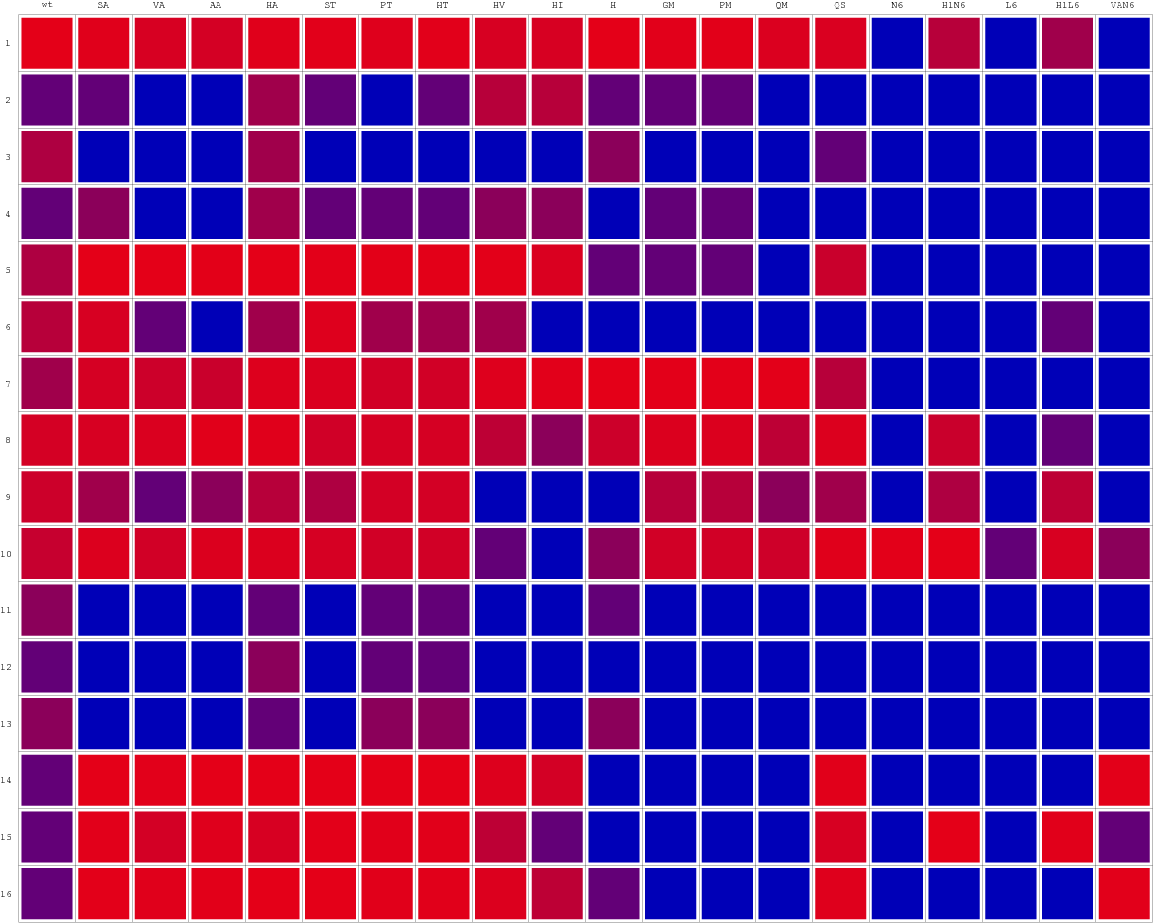USTC/RepressionMatrixFromLiterature
From 2007.igem.org
Xiaofeng Su (Talk | contribs) m |
Xiaofeng Su (Talk | contribs) |
||
| Line 1: | Line 1: | ||
| - | The Repression Matrix comes from other's previous work results[7,8,9]. However, we hardly get an 'ORM' because the cross repression are obvious according to this results. i.e. we may not obtain stable Repressor-Promoter Pairs as our wires with high fidelity. | + | The Repression Matrix comes from other's previous work results[[USTC/RepressionMatrixFromLiterature#References|[7,8,9]]]. However, we hardly get an 'ORM' because the cross repression are obvious according to this results. i.e. we may not obtain stable Repressor-Promoter Pairs as our wires with high fidelity. |
[[Image:USTC_MullerRepression.png|thumb|center|800px|'''Figure I''' The same with the former RM that red color represents a high repression while blue represent reverse. This Matrix are not directly from literatures but from the data by previous research work.]] | [[Image:USTC_MullerRepression.png|thumb|center|800px|'''Figure I''' The same with the former RM that red color represents a high repression while blue represent reverse. This Matrix are not directly from literatures but from the data by previous research work.]] | ||
Revision as of 16:11, 25 October 2007
The Repression Matrix comes from other's previous work results[7,8,9]. However, we hardly get an 'ORM' because the cross repression are obvious according to this results. i.e. we may not obtain stable Repressor-Promoter Pairs as our wires with high fidelity.
References
1. Lewis, M. (2005), 'The lac repressor.', C R Biol 328 (6), 521--548.
2. Lac Operon, http://en.wikipedia.org/wiki/Lac_Operon
3. Kalodimos, C. G.; Bonvin, A. M. J. J.; Salinas, R. K.; Wechselberger, R.; Boelens, R. & Kaptein, R. (2002), 'Plasticity in protein-DNA recognition: lac repressor interacts with its natural operator 01 through alternative conformations of its DNA-binding domain.', EMBO J 21(12), 2866--2876.
4. Arnold, Frances H. and Georgiou, George. ' Directed Evolution Library Creation, Methods and Protocols', Methods in Molecular Biology<i>, Humana Press, Volume 231, 2003
5. Arnold, Frances H. and Georgiou, George. ' Directed Evolution Library Creation, Screening and Selection Methods', <i>Methods in Molecular Biology, Humana Press, Volume 230, 2003
6. Sadler, J. R.; Sasmor, H. & Betz, J. L. (1983), 'A perfectly symmetric lac operator binds the lac repressor very tightly.', PNAS 80(22), 6785--6789.
7. Lehming, N.; Sartorius, J.; Niemöller, M.; Genenger, G.; v Wilcken-Bergmann, B. & Müller-Hill, B. (1987), 'The interaction of the recognition helix of lac repressor with lac operator.', EMBO J 6(10), 3145--3153.
8. Lehming, N.; Sartorius, J.; Oehler, S.; von Wilcken-Bergmann, B. & Müller-Hill, B. Recognition helices of lac and lambda repressor are oriented in opposite directions and recognize similar DNA sequences. PNAS, 1988, 85, 7947-7951
9. Sartorius, J.; Lehming, N.; Kisters, B.; von Wilcken-Bergmann, B. & Müller-Hill, B. (1989), 'lac repressor mutants with double or triple exchanges in the recognition helix bind specifically to lac operator variants with multiple exchanges.', EMBO J 8(4), 1265--1270.
10. Salinas, R. K.; Folkers, G. E.; Bonvin, A. M. J. J.; Das, D.; Boelens, R. & Kaptein, R. Altered specificity in DNA binding by the lac repressor: a mutant lac headpiece that mimics the gal repressor.' Chembiochem, 2005, 6, 1628-1637
11. Müller-Hill, B. 'Some repressors of bacterial transcription.' Curr Opin Microbiol, 1998, 1, 145-151
